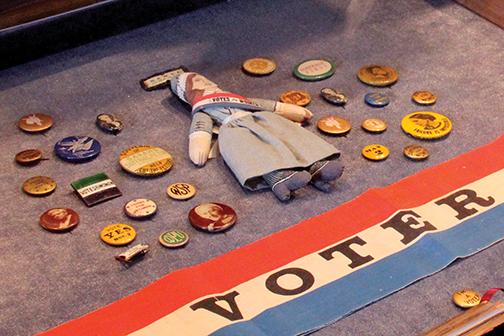Imagine it’s the late 19th century. Women across the U.S. are fed up with being treated like second-class citizens. For centuries they’ve been cast in the shadow of men—though they’ve been at the forefront of wars and have pulled just as much metaphorical weight, history has written them into the background. They’re ready to trade their aprons for voting ballots and rights as equal citizens.
It’s still somewhat surprising that the advances of women throughout history haven’t been more thoroughly documented. Fortunately, today there are enthusiasts working tirelessly to bring their stories to life. Located in our own backyard, the Women’s Museum of California has maintained an impressive collection of documents, memorabilia and other artifacts throughout the years.
The museum began in 1983 as a simple accumulation of historic posters and banners from the feminist movement. In 1995, museum founder Mary Maschal invited the public into her quaint home in Golden Hill to share her collection and the experiences of many female revolutionary icons. The excited reactions of the public ignited a burning need for a more permanent exhibit, and two years later Maschal’s collection was moved into the nearby Art Union Building.
“The idea is to educate and inspire about the experiences of women,” former museum board president and lecturer of women’s studies at San Diego State Sue Gonda said. “The most important part … is to make people understand that women have been fundamentally active and involved in every aspect of American history.”
After a handful of name changes and, as of last year, a move to a larger gallery in the heart of Liberty Station, the WMC is still going strong. Its reach extends well into the San Diego community, embracing those who have made an impact in both the past and present.
One of the museum’s proudest accomplishments is the establishment of the San Diego County Women’s Hall of Fame. In collaboration with the Department of Women’s Studies at SDSU, the Women’s Center, University of California, San Diego and the Commission on the Status of Women, the annual Women’s Hall of Fame ceremony was created in 2001 to recognize the accomplishments of women whose actions have made a difference in the community.
“The wonderful thing about the partnership and the Hall of Fame is that the women are very diverse, in many ways,” Gonda said.

Currently the WMC is one of only five museums in the nation that focuses on women’s history, and the only one in California. Specifically, the content of the exhibit emphasizes the context of women emerging from the West, a history quite different than that of the east coast timelines.
“We want to focus on the Western story,” Executive Director of the WMC Ashley Gardner said. “We want to make sure in our storytelling that we are connected to that because people who live here, they want to know more about their community and where people came from.”
Many interesting anecdotes and historical advancements have taken place right here in San Diego, and part of the museum’s mission is to bring those stories to light. Gardner hopes people will come to appreciate the struggles many have gone through to get women where they are today.
“We’re not all the way there,” Gardner said. “We’ve come a long way, and it’s women whose shoulders we stand on.”
As a nonprofit organization, the WMC depends on the hard work of volunteers and those who generously give their all to keep the exhibits going and raise community awareness about the museum’s purpose.
“We couldn’t run this museum without volunteers,” Gardner said. “Part of our values is to value every gift people bring us.”
The WMC works closely with SDSU’s department of Women’s Studies to host events and heighten awareness about current discriminations. Graduates and undergraduates of the program are involved in the processes of the museum, acting as volunteers and even as interns earning credit for classes.
SDSU’s women’s studies department itself is quite revolutionary. In 1970 it became the first program in the world to focus solely on the advancement of women throughout human history. Gonda emphasized students from all majors are welcome, and encourages students to explore women’s studies as an elective course.
In the grand scheme of things, our sophisticated society is still relatively young. Much younger than that is the prospect of gender equality, and though women have already come such a long way in gaining empowerment, there is still work to be done. Similar to the iconic women of the past, the WMC is paving the way for women everywhere to embrace their heritage and take pride in their accomplishments.







